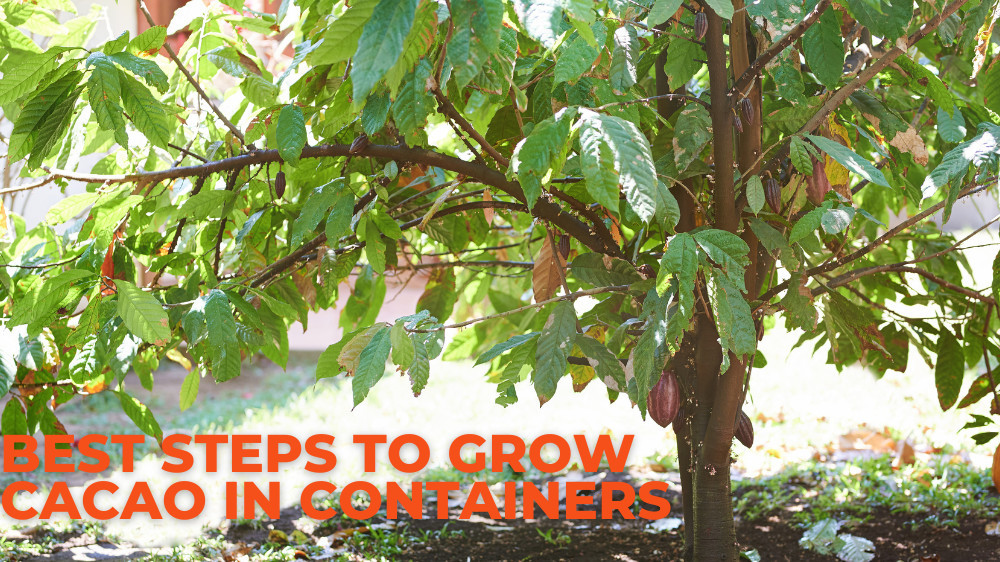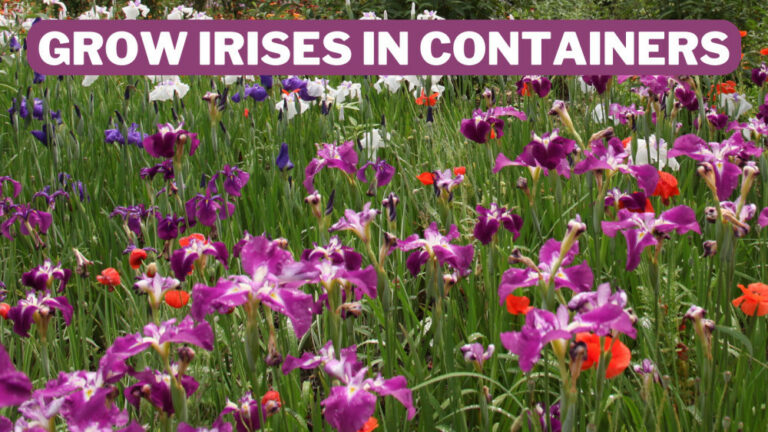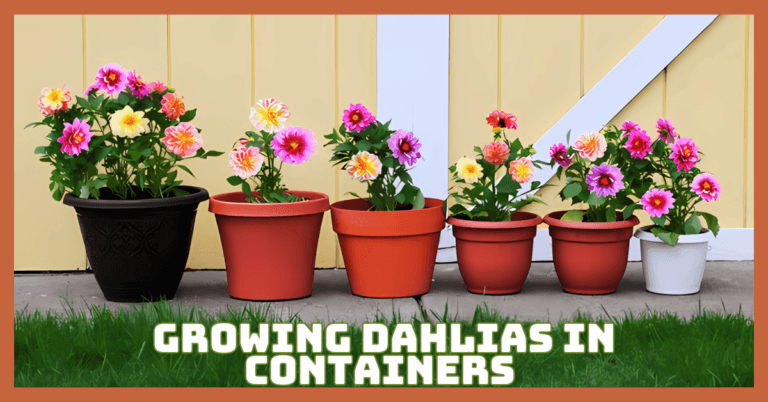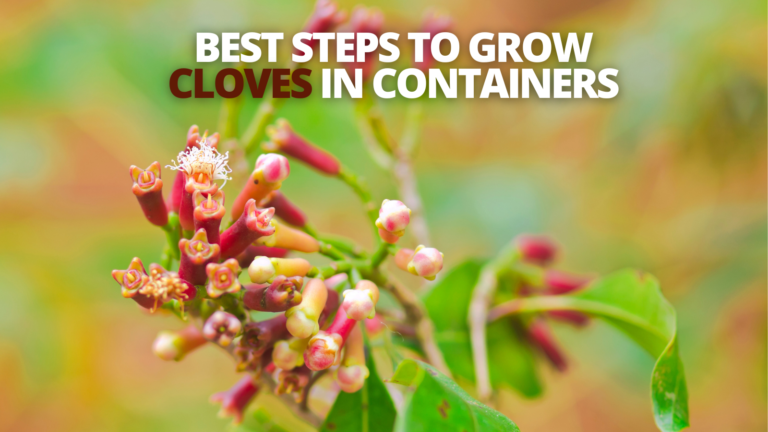Best Steps To Grow Cacao In Containers
Best Steps To Grow Cacao In Containers
Chocolate will improve everything in this world. Whatever the situation, chocolate calms me better than anything else—a fight with my significant other, an unexpected repair bill, a terrible hair day, you name it.
Numerous people adore and yearn for chocolate. Therefore, it is not surprising that some people want to raise their cacao trees. The question is how cacao beans can be grown from cacao tree seeds.
Keep reading more about growing cacao trees and other cacao tree-related information.
History & Origin Of Cacao
Theobroma cacao is the scientific name for the cacao tree, which was given to it by Swedish botanist Carl Linnaeus in 1753.
Greek words for “food of the gods” include theobroma and cacao, and Spanish translations of the Mayan word for the tree, kakaw.
It is thought that the cacao tree originated in the Upper Amazon region, which today encompasses portions of Peru, Ecuador, and Colombia.
It travelled northward from there, presumably with the aid of the earliest Amerindians, through the Andes Mountains and Central America, which became ingrained in their diet and culture.
When Cortez arrived in the early 1500s, cacao was deeply ingrained in Mexican culture and mythology. It was used to make a beverage blended with corn and spices.
Royalty, warriors, and wealthy merchants drank cacao mixed with maize and spices as a beverage, and the seeds or beans were used as money.
The maize in this traditional beverage was replaced by sugar, while the Spaniards added cinnamon and vanilla.
As this new beverage, which they called chocolate, gained popularity throughout Europe over time, cacao rapidly spread to tropical areas worldwide.
Early attempts were made to cultivate cacao on enormous farms, much like sugar cane. However, cacao is best suited for tiny family farms and home gardens since it thrives in the shade of higher trees. Today, seven acres or fewer farms produce up to 90% of the world's cacao.
Types Of Cacao
Like any fine wine or coffee maker, a skilled chocolatier pays immediate care to the unroasted beans used in creating chocolate.
The forastero variety of low-grade bulk beans provides more than 80% of the world's chocolate.
Craft chocolatiers use mostly quality and occasionally rare bean varietals for some of the exquisite chocolate in our boxes. Knowing the best varieties is important when growing cacao in containers.
1. Forastero Cacao
The forastero varietal still dominates world chocolate production. Due to its high-yielding plants, forastero was a simple choice for producers until the middle of the 20th century, when it was used instead of the inferior criollo crop.
Consider the forastero as your typical grocery store tomato and the criollo as that heirloom variety that gives your mouth a taste explosion.
Forastero, also known as bulk cacao, is grown mainly in West Africa. This chocolate has a primary, earthy flavour.
2. Criollo Cacao
Today, Criollo plants make up less than 1 to 5% (experts disagree on that amount) of the world's crop production because of their frail status, sensitivity to disease, and low yield.
Criollo beans are regarded as excellent cacao and craft chocolate makers covet several heirloom types partly because of their scarcity and unmistakable, rich flavour.
Porcelana, chuao, and ocumare beans, which correspond to a distinct terroir of the criollo bean, are among the criollo variety. Criollo chocolate frequently has a fruity flavour, is quite aromatic, and is not bitter.
3. Trinitario Cacao
Although not as uncommon as criollo beans, fewer than 10% of all cacao is produced with Trinitario beans.
This hybrid strain moved from the Caribbean islands to South America in the nineteenth and twentieth centuries.
Despite being the least pure, the Trinitario possesses the broadest range of tastes and characteristics of any other cultivar. The criollo primarily influences the rich tastes in this bean to forastero ratios and terroir.
Grow Cacao In Containers
1. Choosing The Right Container
The cacao tree is a simple plant to nurture for container gardening, but it needs some space to bear fruit.
Usually, plants are cultivated from seeds, and it takes 3–4 years to mature enough to bear fruit.
This indicates that the tree will be between 5 and 6 feet tall, with a trunk diameter between 1½ and 2 inches. A sizable, warm, and sunny area is required to cultivate chocolate indoors.
2. Soil To Grow Cacao In Containers
These trees flourish in soil rich in organic matter. Sharp drainage must also be present in the soil.
They can stand a pH range of the soil from mildly acidic to slightly alkaline. Add soil mixture that has been well-drained to your planting container.
Any typical commercial potting soil will work. For optimal results, add some well-rotted compost and sand to your potting soil.
This will provide the plant with a rich sandy base comparable to what it would find in the wild—the pH of the soil where cacao grows best ranges from 5 to 6.
3. Watering Requirements
The soil for cacao trees should be consistently moist. Watering too much might cause the soil to stay moist and damage the tree's roots.
When the top inch of soil dries out, water the area. Occasionally mist your cacao plant throughout the day. This plant evolved in a tropical environment.
Therefore, frequent spritzes are preferable to heavier watering. With a spray bottle, thoroughly mist the soil's upper surface and the leaves, careful not to overwater. Between sprays, let the soil feel completely dry.
When watering new seedlings, mist the underside of the leaves rather than the top. The weight of pooling water may be too much for the leaves to support.
4. Sunlight Requirements
Place your plant so that it can get some filtered light. Set aside an appropriate area away from open windows, such as next to a taller plant or in the middle of a room.
Filtered light is ideal for chocolate trees because they often naturally grow in the shade of the rainforest canopy.
Young cacao trees will develop on a windowsill, but they will overrun it. Maintain them in dappled light. Avoid placing your cacao plant near extreme heat or sunlight, as they could dry it out.
5. Temperature & Humidity
Cacao trees thrive in conditions between 65 and 85°F. They can withstand heat well if their moisture requirements are met and the sun doesn't sear their foliage.
However, they struggle in cold or frosty conditions. Anything below 40°F can significantly harm or kill the trees.
Thus, cacao trees like temperatures above 60°F. High humidity is also necessary for them. They won't prosper in a hot, dry area.
Create a humid environment for your plant. A humidifier placed close by can help your cacao seedling get the moisture it needs to grow.
If you don't have a humidifier, leave a bowl of water next to your plant so it can continuously absorb some humidity.
6. Pruning Cacao Trees
Cacao trees should be pruned once or twice yearly to keep their size and shape. The optimal time to prune is right after a seed pod harvest, but you should always cut off any dead, sick or injured branches as soon as you notice them. Pruning branches selectively will increase air circulation and let sunshine reach every tree region.
7. Fertilizer
Given that these trees consume a lot of food, it is preferable to apply an organic balanced fertilizer according to the directions on the packaging.
Annually incorporating compost into the soil might also be advantageous. Feed growing plants every two to six weeks.
Apply a general-purpose water-soluble fertilizer once every couple of weeks or put a granular top dressing over the soil roughly once a month.
You may also opt for a natural fertilizer such as liquid seaweed or fish emulsion to keep essential nutrients flowing to the plant.
The ideal fertilization time is the plant's peak growing season, which lasts from mid-spring to early fall. Wait until the second set of leaves has emerged before fertilizing sprouting seeds.
Don't overfeed your cacao plant, please. This could damage the roots and limit their ability to flourish.
8. Germinating Cacao Seeds
To start a cacao tree from seed, buy a cacao pod. In tropical climes, cacao pods are frequently available from local farmers' markets or other gardeners.
If not, you'll probably have to purchase your starter pod from an online merchant. Cacao seeds must be shipped quickly since they only germinate when fresh.
- If you're purchasing a pod from another country, familiarize yourself with the import regulations in your country. Most trustworthy sellers will generally alert you to potential problems before buying.
- With up to 30 to 50 seeds per pod, you have many opportunities to start a new plant that grows effectively.
- Order a young plant from an exotic plant nursery or specialized horticulturist and begin planting it as soon as it arrives if you prefer the simplicity of starting a chocolate tree from a viable seedling.
- Caca seeds need to germinate before planting.
- Find out how long it typically takes for a mature plant to start making its pods. Depending on the cultivar, It might take two to five years for a plant to reach fruiting size.
- Take the ripe pod's seeds out. Dissect the pod using a sharp knife, careful not to hurt the delicate seeds inside. Hand-pick the seeds from the fleshy, white pulp, then rinse them in a stream of warm water to get rid of any leftover material.
- You can also put the seeds in your mouth and suck them clean if that's what you want. The cacao pod's pulp is a sweet, gooey nectar that tastes good.
- Whatever seeds you don't intend to plant, eat, or throw away. There is no point in storing them since they cannot be stored successfully and spoil quickly once the pod is opened.
- Keep cacao seeds warm, wet, and dry to encourage germination. The ideal method is to wrap the seeds in a wet paper towel and lay them on a heated seedling pad or hot water bottle until they sprout. Depending on the exact heat and humidity levels present, this could take 3 to 7 days.
- You can create your own DIY hot water bottle by putting a hand towel in hot water and sealing it inside a gallon-sized plastic zipper bag. This will only temporarily replace it since it stays hot for an hour.
- Caca seeds must germinate before they can be planted.
9. Planting Cacao Seedlings
For more straightforward cultivation, purchase a sprouted seedling. Starting with a germinated plant can be your best option if you reside in a region with a more moderate climate.
Ask your neighbourhood garden center or plant nursery if they can help you find a cacao seedling.
Once you have the tree, you need only plant it and care for it until it starts to bear fruit.
- Ask for a cacao plant that is “self-compatible.” These can develop fruit pods (which contain the seeds for making chocolate) without being pollinated.
- Most seeds require pollination from a different tree because they are “self-incompatible.” To accomplish this, more than one tree must be in the same area.
- Starting with a seedling is usually the best course unless you're an expert.
- A seedling is more resistant to disease and climate-related problems because it has already been hardened for container culture.
- Have one or larger containers available, if at all possible. After about 4-5 months, growing seedlings need to be replanted.
- When fully developed, trees can grow to a height of 5 to 6 feet (1.5 to 1.8 meters) and a trunk diameter of 1.5 to 2 feet (0.46–0.61 m).
- Sow the seeds or seedlings in the pot. Transferring the cacao to your growing container is all left to accomplish now. Create a deep depression to accommodate a young seedling or press the germinated seeds ½ inch (1.3 cm) into the ground. The dirt should then be lightly patted to secure the seeds or seedlings.
- Limit 2-3 seeds or 1 seedling per container, as chocolate trees require a small amount of space to flourish; if the plants outgrow their original location, be ready to relocate them.
10. Pests & Diseases Of Cacao
Very few bugs will probably get to your indoor cacao tree because there isn't a lot of cross-contamination from outdoor plants.
Of course, mealybugs and aphids also enjoy this plant well, so if an infestation appears, you may need to treat them.
Additionally, as time passes, you should look for root disease (like any plant) and remember to move the plant to bigger pots as needed.
By carefully following these instructions, you can cultivate a cacao tree that will impress your visitors, especially if they are horticulturists like yourself.
The effort and trial-and-error frequently required to see a tropical tree flourish in a non-tropical environment are well worth it.
11. Harvesting Cacao
The cacao tree's trunk and branches produce pods containing cacao beans. Harvesting entails taking mature pods off the trees and cracking them open to remove the moist beans. The pods are hand-collected, and a sharp blade makes a clean cut through the stalk.
The pods are opened to collect the beans within a week to ten days after harvesting. The harvested pods are often gathered and split within or near the plantation's edge. The pods may occasionally be moved to a fermenter before breaking.
The husks can be scattered around the fields to replenish the soil's nutrients if the pods are cracked open in the planting zones.
The most effective method of opening the pods is to use a wooden club, which splits it in half when struck in the center of the pod, making it simple to extract the wet beans by hand.
People frequently use a machete to split the pod, albeit doing so can harm the beans. Although some equipment has been created for pod opening, smallholders often do it by hand.
After being removed from the pod, the beans undergo a fermenting and drying process before being packed for distribution.
12. Make Your Cacao Powder
We demand our fresh cacao powder from whole, unprocessed cacao beans. Cacao beans, like coffee beans, taste best right after grinding. Like grains and other seeds, once they are ground, their nutritional quality deteriorates.
Whole, raw cacao beans keep much longer than pre-ground powder when kept in a cool, dark environment.
Conclusion
Micronutrients like polyphenols and flavanols, which are potent antioxidants and help lower blood pressure, reduce inflammation, and improve cholesterol and blood sugar levels, are abundant in cacao.
However, the health benefits of cacao can be significantly reduced during the production of chocolate or other products.
Even antidepressant-like effects are known side effects. Dark chocolate and natural or non-alkalized cacao powder offer the best health benefits, though they may not taste as sweet as commercial hot cacao mixes. Feel free to comment here if you need help growing cacao in containers.
I trust you enjoyed this article on the Best Steps To Grow Cacao In Containers. Please stay tuned for more blog posts to come shortly. Take care!
JeannetteZ
>>>Please click here to read my all-inclusive article, About The Essential Companion Planting Guide<<<
>>>Please click here to read my all-inclusive article about Container Gardening<<<
>>>Are you interested in homegrown herbs and medicine? Please click here to find out more about it!<<<
Your Opinion Is Important To Me
Do you have thoughts, ideas, or questions? I would love to hear from you. Please leave me your questions, experiences, and remarks about this article on the Best Steps To Grow Cacao In Containers in the comments section below. You can also reach me by email at Jeannette@Close-To-Nature.org.
Disclosure
This post may contain affiliate links. As an Amazon Associate and other affiliate programs, I earn from qualifying purchases at no extra cost to you. Read my full affiliate disclosure.
You might also enjoy these blog posts:
Best Steps To Grow Squash In Containers
Best Steps To Grow Camelia In Containers
Best Steps To Grow Gayfeather In Containers
Best Steps To Grow Yarrow In Containers
Best Steps To Grow Conebushes In Containers





















